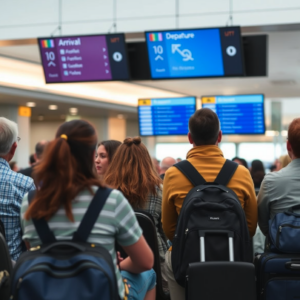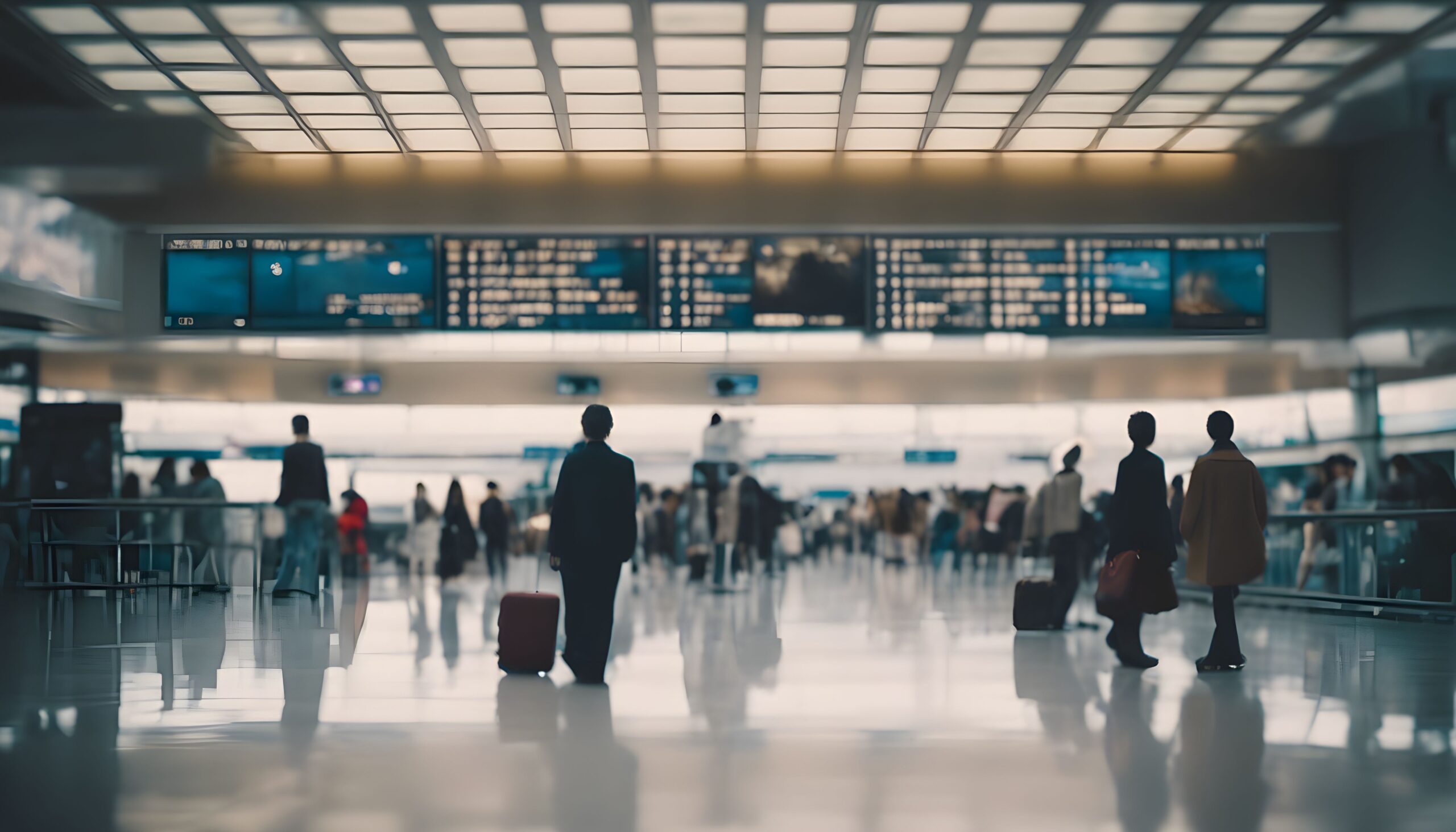Newark Liberty International Airport, situated in the heart of the New York metropolitan area, serves as a vital air travel hub for millions of passengers each year. As the busiest airport in the U.S. by passenger traffic, Newark is not only crucial for the region’s economy but also a key international gateway. However, over the last several months, Newark Airport has faced increasing challenges. These include rising flight delays, outdated infrastructure, and a significant shortage of air traffic controllers.
Due to these disruptions, the Federal Aviation Administration (FAA) has been forced to take dramatic measures in an attempt to restore order. From infrastructure upgrades to an aggressive air traffic controller recruitment campaign, the FAA’s response marks a critical turning point in how the U.S. aviation system handles traffic disruptions at one of its busiest airports.
In this article, we will explore the root causes of Newark’s flight disruptions, the FAA’s efforts to address the crisis, and what these changes mean for passengers, airlines, and the future of air travel in the region.
The Significance of Newark Liberty International Airport
Newark Liberty International Airport (EWR) is the primary gateway to the U.S. for travelers arriving from Europe, South America, and Asia. Serving over 45 million passengers annually, it is the sixth-busiest airport in the U.S. and plays an essential role in global aviation. Newark is a major hub for United Airlines, offering direct flights to over 180 destinations worldwide.
Despite its central role in the region’s air traffic system, Newark has long been criticized for its outdated infrastructure and congested airspace. The airport’s capacity has consistently struggled to meet demand, with limited runways and terminal space causing bottlenecks and delays. While these challenges have existed for years, recent events have escalated the situation, prompting the FAA to step in.
Flight Disruptions at Newark: A Growing Crisis
Flight delays and cancellations at Newark have reached alarming levels, causing significant disruptions for passengers and airline operations. According to the FAA’s latest data, 32% of flights at Newark were delayed by 30 minutes or more during the first quarter of 2025, well above the national average of 22%. In addition, over 56 flights per day have been either canceled or rerouted due to system bottlenecks and air traffic control challenges.
Key Issues Contributing to Newark’s Disruptions
There are several interconnected reasons behind the rising disruptions at Newark Airport, which include staffing shortages, aging infrastructure, and overcrowded airspace.
1. Air Traffic Control Shortages
The air traffic control system in the U.S. has been severely understaffed in recent years, with Newark’s air traffic control (ATC) tower being hit especially hard. The FAA reported that air traffic controller levels at the New York Terminal Radar Approach Control (TRACON) facility, which oversees air traffic at Newark, were dangerously low. Staffing shortages have resulted in increased workloads for the remaining controllers, leading to slower response times and delays.
The problem worsened in July 2024, when the FAA made a controversial decision to shift air traffic operations from Newark to Philadelphia. While this move was intended to reduce controller stress, it only compounded the problem, as it created coordination issues during peak traffic times. This measure, while temporary, was intended to provide relief to Newark’s control tower, but it fell short in providing a long-term solution.
2. Aging Infrastructure and Technical Failures
Newark’s aging infrastructure has long been a source of concern. In April 2025, a critical radar and communication blackout occurred due to a burnt-out copper wire in the system’s power converter. While the outage lasted only 90 seconds, it caused significant disruptions, including 11 flight diversions and several near-miss incidents. The incident highlighted just how vulnerable Newark’s infrastructure is to even small technical failures.
The airport’s radar systems are largely outdated, and many of the communication lines still rely on copper wiring, which is prone to failure. The FAA has been aware of these issues for years but has been slow to address them, and this recent blackout has prompted an urgent push for updates to the infrastructure.
3. Overcrowding and High Traffic Volume
As air travel demand has surged post-pandemic, Newark has been operating at near-full capacity. The airport’s runways and taxiways are often congested, particularly during peak hours. Bad weather, a common occurrence in the Northeast, only exacerbates the problem, as delays stack up quickly and cause a ripple effect throughout the airport’s operations. The resulting ground congestion often delays takeoffs and landings, further prolonging delays for passengers.
The FAA’s Drastic Measures to Restore Order
In response to these ongoing challenges, the FAA has implemented a series of immediate actions aimed at restoring order and addressing Newark’s operational issues. These efforts are part of a broader initiative to modernize the nation’s air traffic control systems and ensure that major airports like Newark remain capable of handling high volumes of air traffic.
1. Infrastructure Overhaul
The FAA has committed to spending over $450 million to upgrade Newark’s infrastructure, with immediate focus on modernizing radar and communication systems. This will include replacing outdated copper wiring with fiber optic cables, which are more reliable and capable of handling the increased traffic load. New backup communication systems will also be installed to ensure that technical failures like the April blackout do not occur again.
Additionally, the FAA is funding expansions to taxiways and runways to alleviate congestion on the ground. This project is expected to reduce delays caused by aircraft stacking on the tarmac and ensure that flights can be processed more efficiently during peak times.
2. Air Traffic Control Recruitment and Retention
Recognizing the severity of the air traffic controller shortage, the FAA has launched a nationwide recruitment campaign aimed at attracting new candidates to high-demand areas like Newark. The agency is offering signing bonuses, relocation assistance, and higher salaries for controllers willing to work in busy facilities. Additionally, the FAA is introducing accelerated training programs to bring new recruits into the workforce more quickly.
By August 2025, the FAA plans to increase staffing at Newark’s air traffic control center by 40%, which will help alleviate the strain on existing controllers and improve overall efficiency.
3. Flight Caps and Airline Coordination
To manage overcrowding and reduce delays, the FAA has implemented temporary flight caps at Newark. This measure limits the number of flights that can be scheduled during peak hours, with airlines required to adjust their schedules accordingly. While this may result in fewer flights operating through Newark, it is expected to improve efficiency by allowing air traffic controllers to manage the flow of flights more effectively.
The FAA has also been working closely with airlines to coordinate flight schedules and ensure that they are in line with the airport’s available capacity. United Airlines, Newark’s largest carrier, has already reduced its daily flight schedule from 440 to 293 flights in response to these new regulations.

Impact on Airlines and Passengers
The FAA’s measures are already beginning to affect both airlines and passengers at Newark Airport.
Impact on Airlines
For airlines, the FAA’s flight caps and operational adjustments have led to significant scheduling changes. While the measures are expected to improve overall flight reliability, they also create challenges for airlines:
-
Reduced capacity means fewer seats available for passengers, potentially leading to higher ticket prices.
-
Rerouted flights may affect airlines’ profitability, especially for carriers like United Airlines, which rely heavily on Newark as a hub.
-
Coordination with the FAA to manage flight schedules more efficiently will require airlines to make adjustments to their flight crews, routes, and staffing levels.
Impact on Passengers
For passengers, the FAA’s changes will likely result in fewer flights but more reliable operations. Though Newark may experience temporary flight caps, the overall reduction in delays and cancellations should improve the passenger experience in the long run.
However, passengers should prepare for the following:
-
Increased ticket prices due to reduced flight availability.
-
Longer waiting times during peak travel periods as flight schedules adjust to new regulations.
-
Potential disruptions if airlines are forced to reroute passengers through alternate airports due to capacity limits at Newark.
Looking Ahead: The Future of Newark Airport
The FAA’s response to the crisis at Newark Airport is an important step, but experts agree that long-term changes are needed. While the infrastructure improvements and staffing increases will help in the short term, more comprehensive reforms are necessary to ensure that Newark can continue to handle growing air traffic without compromising safety and efficiency.
Industry analysts have called for:
-
Smarter, AI-driven scheduling systems that can better manage air traffic flow and prevent delays.
-
Nationwide upgrades to air traffic control systems to ensure they can handle the demands of modern aviation.
-
A focus on improving air traffic controller training and retention to address the persistent staffing shortage.
Newark Liberty International Airport’s recent troubles have drawn attention to the fragility of the U.S. aviation system. With the FAA’s swift action, the airport is taking steps to recover from the current crisis. Through infrastructure upgrades, staffing initiatives, and strategic coordination, Newark hopes to regain its position as a reliable hub for domestic and international air travel.
Travelers can expect improved operations at Newark in the coming months, but it’s clear that the airport’s challenges are far from over. For the long-term health of the nation’s aviation system, continued investments and reforms will be essential.
Feel free to check out our other website at : https://scoremaxed.com/










